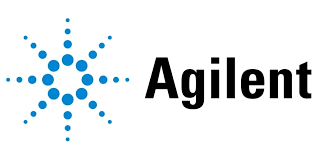Ai In Iot Security
Published Date: 28 October 2025 | Report Code: ai-in-iot-security
Ai In Iot Security Market Size, Share, Industry Trends and Forecast to 2033
This comprehensive report on AI in IoT Security presents an in-depth analysis of market dynamics, technological innovations, and regional trends forecasting the period from 2024 to 2033. It outlines market size, CAGR, competitive industry analysis, segmentation, and key drivers that are reshaping security solutions in the rapidly evolving ambient of IoT.
| Metric | Value |
|---|---|
| Study Period | 2024 - 2033 |
| 2024 Market Size | $3.80 Billion |
| CAGR (2024-2033) | 18.2% |
| 2033 Market Size | $18.59 Billion |
| Top Companies | Cisco Systems, IBM Corporation |
| Last Modified Date | 28 October 2025 |
Ai In IoT Security Market Overview
Customize Ai In Iot Security market research report
- ✔ Get in-depth analysis of Ai In Iot Security market size, growth, and forecasts.
- ✔ Understand Ai In Iot Security's regional dynamics and industry-specific trends.
- ✔ Identify potential applications, end-user demand, and growth segments in Ai In Iot Security
What is the Market Size & CAGR of Ai In IoT Security market in 2024?
Ai In IoT Security Industry Analysis
Ai In IoT Security Market Segmentation and Scope
Tell us your focus area and get a customized research report.
Ai In IoT Security Market Analysis Report by Region
Europe Ai In Iot Security:
Europe is characterized by its strong regulatory framework and focus on digital privacy, which contributes significantly to the adoption of AI in IoT Security. The market in Europe is anticipated to grow from an initial size of roughly 1.26 in 2024 to about 6.17 by 2033. European nations are leveraging advanced analytics and collaborative cybersecurity initiatives to mitigate emerging threats. This region also benefits from a well-established industrial base and a high degree of technological literacy, bolstering demand for innovative security solutions across multiple sectors.Asia Pacific Ai In Iot Security:
In the Asia Pacific region, the AI in IoT Security market is witnessing vigorous growth driven by rapid industrialization and urbanization. With market estimates starting at approximately 0.72 in 2024 and expanding to around 3.53 by 2033, the region is becoming a hotspot for technological adoption in smart cities and industrial applications. The increasing demand for integrated security solutions in burgeoning economies such as India, China, and Japan is fostering innovation and investment in advanced surveillance and security systems. Additionally, supportive government policies and rising concerns over cyber threats are catalyzing further market expansion in this dynamic region.North America Ai In Iot Security:
North America remains one of the leading regions in adopting advanced AI in IoT Security technologies, with a market size of around 1.24 in 2024 set to grow to approximately 6.09 by 2033. This region benefits from high technology penetration, substantial investments in cybersecurity, and a mature digital economy. The presence of major technology firms and a relentless focus on innovation drive rigorous standards in risk management, ensuring continuous market growth and a steadfast commitment to state-of-the-art security measures.South America Ai In Iot Security:
South America is gradually emerging as an important market for AI-driven IoT security solutions. Despite starting with a modest market size of about 0.34 in 2024, the region is projected to grow to approximately 1.67 by 2033. This expansion can be attributed to improved digital infrastructure, enhanced connectivity, and a growing awareness of cybersecurity risks among businesses and consumers alike. Brazil, Argentina, and Chile are at the forefront of this positive trend, embracing digital transformation initiatives that are accelerating demand for robust security solutions.Middle East & Africa Ai In Iot Security:
The Middle East and Africa region, while currently representing a smaller market segment with a size of around 0.23 in 2024, is projected to experience growth up to 1.13 by 2033. Growth in this region is fueled by an increasing emphasis on technological modernization and infrastructure development. Government initiatives aimed at boosting digital security and improved investment in technology-driven defense solutions are gradually transforming the cybersecurity landscape, thereby creating a conducive environment for the adoption of AI in IoT Security solutions.Tell us your focus area and get a customized research report.
Ai In Iot Security Market Analysis By Technology
Global AI in IoT Security Market, By Technology Market Analysis (2024 - 2033)
This segment focuses on technological advancements critical to AI in IoT Security. Machine Learning stands out as the major driver with a market size increasing from 2.37 in 2024 to 11.57 by 2033, maintaining a share of 62.24% across the period. Complementing this are Blockchain Technology and Encryption Techniques, which provide secure data validation and robust encryption protocols, respectively. Their steady presence in the market, with Blockchain growing from 0.81 to 3.95 and Encryption Techniques from 0.63 to 3.07, both maintaining their share percentages, underscores the balanced approach toward layered security frameworks that effectively mitigate risks associated with interconnected IoT devices.
Ai In Iot Security Market Analysis By Application Area
Global AI in IoT Security Market, By Application Area Market Analysis (2024 - 2033)
Under the application area segment, the market is segmented into Smart Home, Industrial IoT, Healthcare IoT, Smart Cities, and Transportation. Smart Home solutions lead the charge, with a market size growing from 1.81 in 2024 to 8.84 by 2033 and capturing nearly 47.58% of the area’s share. Industrial IoT and Healthcare IoT, despite starting from lower bases, are experiencing robust growth as security concerns in critical infrastructure increase. Smart Cities and Transportation segments are also gaining traction, driven by the need for integrated, interconnected urban security systems. These application areas are harnessing AI to drive intelligent monitoring, situational awareness, and rapid response protocols, thereby enhancing overall operational safety.
Ai In Iot Security Market Analysis By End User Segment
Global AI in IoT Security Market, By End-User Segment Market Analysis (2024 - 2033)
The end-user segment divides the market primarily into Residential, Commercial, Government, and Manufacturing sectors. Among these, the Residential segment holds a significant share, growing from 1.98 in 2024 to 9.68 by 2033 and accounting for 52.08% of the share, underscoring the rising demand for smart home security. Commercial establishments and government entities are increasingly investing in robust security solutions to safeguard sensitive data and critical infrastructure. Similarly, the Manufacturing sector is recognizing the importance of Internet security in industrial automation. Collectively, these segments emphasize a diversified and growing investment profile across various end-user categories seeking comprehensive security solutions.
Ai In Iot Security Market Analysis By Security Type
Global AI in IoT Security Market, By Security Type Market Analysis (2024 - 2033)
Within the security type category, the market is primarily divided into Endpoint Security, Network Security, and Application Security. Endpoint Security demonstrates a significant impact with market sizes expanding from 2.37 in 2024 to 11.57 by 2033 and holding a dominant share of 62.24%. Similarly, Network Security and Application Security are also critical, both moving from 0.81 to 3.95 and 0.63 to 3.07 respectively, each maintaining proportional shares (21.25% and 16.51%). This segmentation highlights the importance of multi-layered defense mechanisms in mitigating diverse cyber threats, with each security type catering to different aspects of data integrity and system protection.
Ai In Iot Security Market Analysis By Deployment Model
Global AI in IoT Security Market, By Deployment Model Market Analysis (2024 - 2033)
The deployment model segment assesses the market’s adaptation to different technological infrastructures, segmented into Cloud-Based, On-Premises, and Hybrid models. Cloud-Based solutions dominate this segment with a notable market expansion from 2.37 in 2024 to 11.57 by 2033 and a share of 62.24%, indicating a preference for scalable and cost-effective solutions. The On-Premises model, increasing from 0.81 to 3.95 with a stable share of 21.25%, caters to organizations with stringent data residency and security requirements. The Hybrid model, moving from 0.63 to 3.07 and holding 16.51% of the market share, offers a balanced approach that integrates the benefits of both cloud-based and on-premises deployments, thereby ensuring flexible and robust security management.
Ai In IoT Security Market Trends and Future Forecast
Tell us your focus area and get a customized research report.
Global Market Leaders and Top Companies in Ai In IoT Security Industry
Cisco Systems:
Cisco Systems is a global leader in networking solutions and has been at the forefront of integrating AI into IoT security. The company continuously innovates by incorporating advanced machine learning algorithms to enhance threat detection and provide robust, scalable security frameworks across its product lines.IBM Corporation:
IBM Corporation leverages its extensive expertise in artificial intelligence and cloud computing to deliver cutting-edge IoT security solutions. With a strong emphasis on research and strategic collaborations, IBM has established itself as a key player in driving industry standards and innovations in cybersecurity.We're grateful to work with incredible clients.









FAQs
What is the market size of ai In Iot Security?
The market size for AI in IoT security is projected to reach $3.8 billion by 2033, growing at a remarkable CAGR of 18.2% from its current valuation. This growth indicates a rising demand for enhanced security solutions in the IoT ecosystem.
What are the key market players or companies in this ai In Iot Security industry?
The key players in the AI in IoT security industry include leading technology giants and specialized security firms that are innovating in AI-driven solutions. These companies are focusing on network, endpoint, and application security to address the increasing complexity of IoT device networks.
What are the primary factors driving the growth in the ai In Iot Security industry?
Major drivers of growth in the AI in IoT security market include the increasing number of connected devices, rising cybersecurity threats, and the adoption of AI technologies to enhance security frameworks. Additionally, regulatory requirements and the need for compliance are pushing enterprises to invest in robust security solutions.
Which region is the fastest Growing in the ai In Iot Security?
North America is the fastest-growing region in the AI in IoT security market, projected to grow from $1.24 billion in 2024 to $6.09 billion in 2033. Other significant regions include Europe and Asia Pacific, showcasing strong growth driven by demand for security solutions.
Does ConsaInsights provide customized market report data for the ai In Iot Security industry?
Yes, ConsaInsights offers customized market report data for the AI in IoT security industry. Clients can tailor reports to specific needs, covering aspects such as regional performance, market segments, and competitive analysis, ensuring comprehensive insights.
What deliverables can I expect from this ai In Iot Security market research project?
Expect deliverables such as detailed market analysis reports, segment-wise insights, competitive landscape evaluations, and forecasts regarding market trends. These reports will equip you with the necessary data to make informed strategic decisions.
What are the market trends of ai In Iot Security?
Current trends in the AI in IoT security market include the increasing integration of machine learning for threat detection, rising investments in cloud-based security solutions, and the adoption of blockchain for enhanced data integrity. Additionally, the focus on endpoint and network security is gaining momentum.

